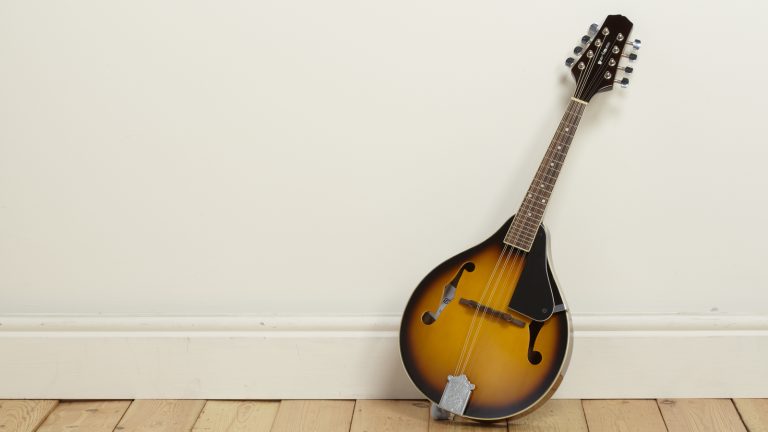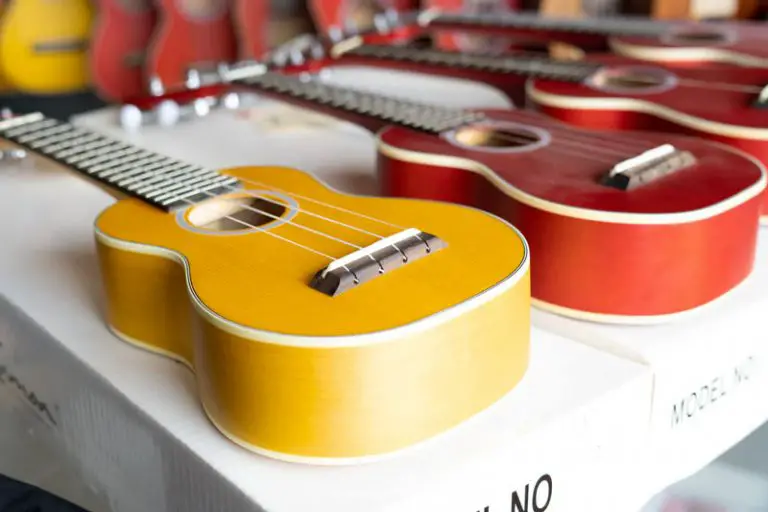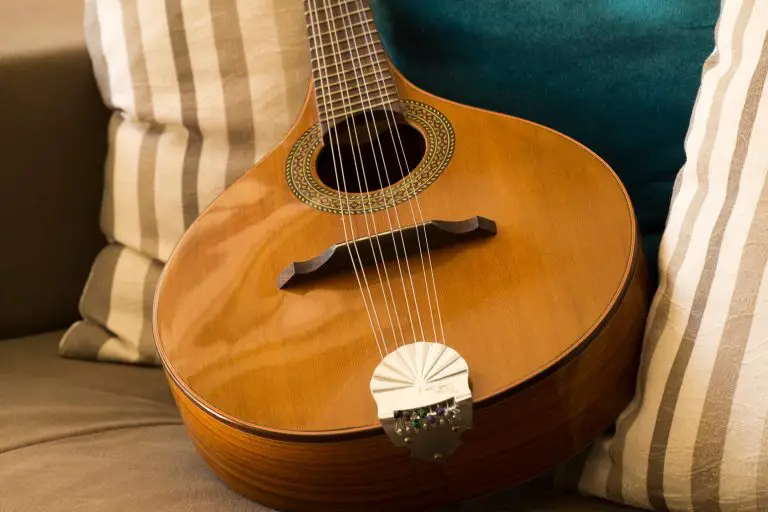A Style vs F Style Mandolin: Differences and Similarities Explained
Folkstrings.com is reader-supported. When you buy through links on our site, we may earn a small commission.
If you’re looking to buy a mandolin, one of the first things you’ll need to decide is whether to go for an A-style or an F-style mandolin. Both have their own unique characteristics and are suited to different styles of music.
Summary
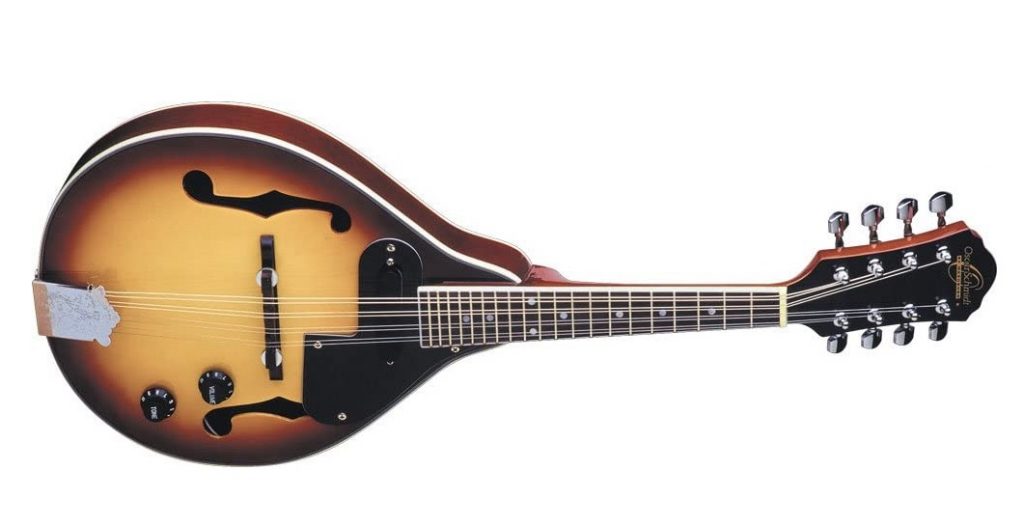
An A-style mandolin has a teardrop-shaped body and a flat back, while an F-style mandolin has a more ornate, scroll-shaped body with f-holes.
A-style mandolins are generally considered to have a warmer, more rounded tone, while F-style mandolins have a brighter, more focused tone.
The differences between A-style and F-style mandolins go beyond just their appearance and tone. A-style mandolins tend to be less expensive than F-style mandolins, making them a good choice for beginners or those on a budget.
However, F-style mandolins are often preferred by professional musicians for their superior sound and craftsmanship.
Ultimately, the choice between an A-style and F-style mandolin comes down to personal preference and the style of music you plan to play.
Table of Contents
Body Design
When it comes to mandolins, two of the most popular styles are the A-style and F-style mandolins. One of the main differences between these two types of mandolins is their body design.
Shape
The A-style mandolin has a simple teardrop-shaped body, while the F-style mandolin has a more elaborate, scroll-shaped body. The teardrop shape of the A-style mandolin is symmetrical and has rounded edges. On the other hand, the F-style mandolin has ornamental scroll points that give it a more decorative look. The scroll points are usually located on the top and bottom of the body, which gives the F-style mandolin a more elegant look.
Scroll Points
The scroll points on the F-style mandolin are more than just decorative, they also serve a purpose. The scroll points are designed to improve the sound quality of the instrument. The scroll points work by redirecting the sound waves that are produced by the strings. This redirection helps to produce a fuller, richer sound.
In contrast, the A-style mandolin typically has a simpler, more straightforward design. It has a teardrop-shaped body with a flat top and back. While the A-style mandolin may not have the ornamental scroll points of the F-style mandolin, it still produces a great sound.
In summary, the body design of the A-style and F-style mandolins is one of the main differences between these two types of mandolins. The A-style mandolin has a simple teardrop-shaped body, while the F-style mandolin has a more elaborate, scroll-shaped body with ornamental scroll points. Both mandolins produce great sound, but the F-style mandolin may be preferred by musicians who want a more decorative and fuller sound.
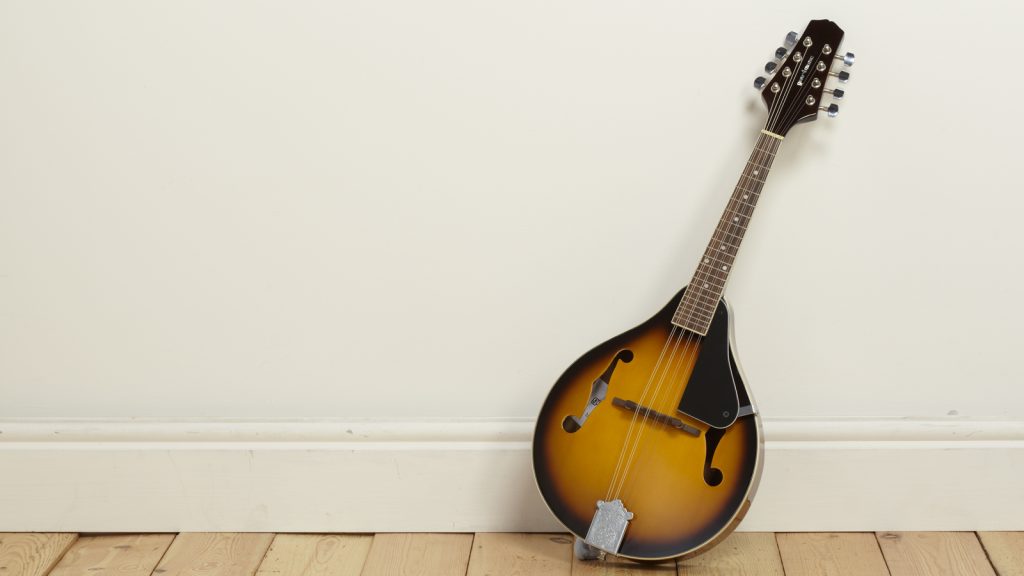
Sound Quality
When it comes to mandolins, sound quality is a critical factor to consider. A mandolin’s sound quality is determined by several factors, including tone, volume, and sound chamber. In this section, we will explore how A-style and F-style mandolins differ in terms of sound quality.
Tone
The tone of a mandolin refers to the overall quality of the sound it produces. A-style mandolins tend to have a milder tone that is suitable for various genres. They are often found with oval-shaped soundholes, which contribute to the mandolin’s mellower sound. On the other hand, F-style mandolins have a brighter tone that is ideal for bluegrass and country music. They feature violin-style F-holes that allow for more projection and resonance.
Volume
Volume is another crucial factor to consider when comparing A-style and F-style mandolins. F-style mandolins are generally louder than A-style mandolins due to their larger sound chamber. The F-style mandolin’s sound chamber is designed to enhance the instrument’s projection and resonance, resulting in a more significant volume.
Brighter Sound
As mentioned earlier, F-style mandolins have a brighter sound than A-style mandolins. This is due to their sound chamber design and the type of wood used to construct the instrument. F-style mandolins are typically made from maple wood, which is known for its bright, clear sound. A-style mandolins, on the other hand, are often made from mahogany or other softer woods, which produce a mellower sound.
Sound Chamber
The sound chamber of a mandolin plays a vital role in determining its sound quality. F-style mandolins have a larger sound chamber than A-style mandolins, which allows for more projection and resonance. The F-style mandolin’s sound chamber is also designed to enhance the instrument’s high-end frequencies, resulting in a brighter sound. A-style mandolins, on the other hand, have a smaller sound chamber that produces a more mellow sound.
In summary, A-style and F-style mandolins differ significantly in terms of sound quality. A-style mandolins have a milder tone, lower volume, and smaller sound chamber, while F-style mandolins have a brighter sound, higher volume, and larger sound chamber. Ultimately, the choice between the two comes down to personal preference and the type of music you want to play.
Playability
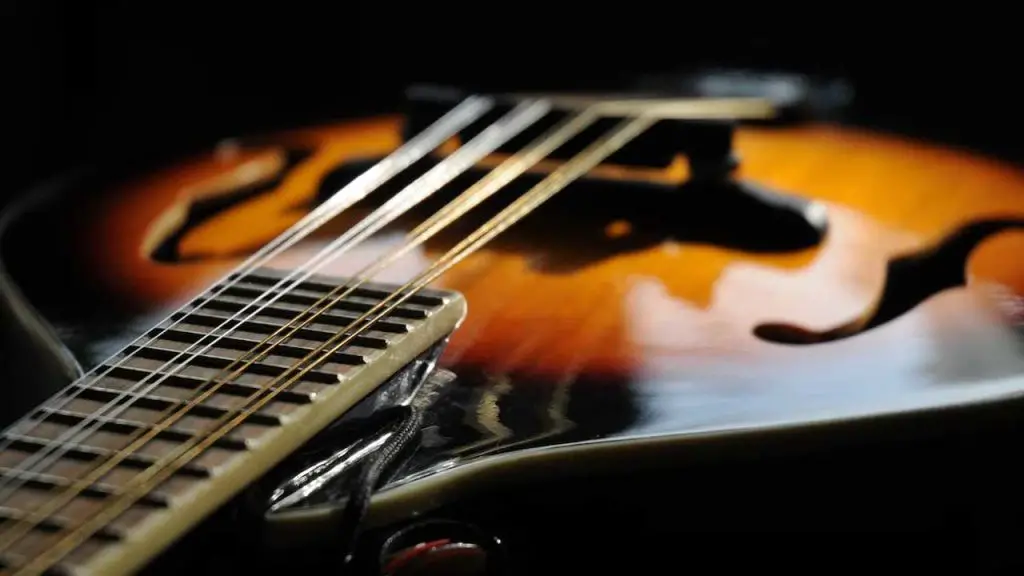
When it comes to choosing between A style and F style mandolins, playability is a crucial factor to consider. Here are some aspects you need to keep in mind when it comes to the playability of these mandolins.
Pick
The pick you use can have a significant impact on the playability of your mandolin. Most players prefer to use a standard teardrop-shaped pick, but there are many other options available. Experiment with different picks to find the one that feels most comfortable and produces the desired sound.
Frets
The number of frets on a mandolin can affect its playability. A-style mandolins typically have fewer frets than F-style mandolins, which can make them easier to play for beginners or players with smaller hands. However, F-style mandolins with more frets can offer more range and flexibility for advanced players.
Neck
The neck of a mandolin can also affect its playability. A thinner neck can make it easier to move your fingers around the fretboard, while a thicker neck can provide more stability and control. Consider your playing style and preferences when choosing a mandolin with the right neck size and shape.
Acoustic vs Electric
The type of mandolin you choose can also impact its playability. Acoustic mandolins are typically more traditional and offer a warmer, more natural sound. Electric mandolins, on the other hand, can be easier to amplify and offer more tonal options. Consider your playing environment and style when choosing between an acoustic or electric mandolin.
Instrument Setup
Finally, the setup of your mandolin can have a significant impact on its playability. Make sure your mandolin is properly adjusted and set up to ensure the best possible playability. This includes adjusting the bridge height, string height, and intonation. If you are unsure how to do this, consider taking your mandolin to a professional luthier for setup and adjustments.
In conclusion, when it comes to playability, there are many factors to consider when choosing between A-style and F-style mandolins. Keep in mind your playing style, preferences, and environment to find the mandolin that offers the best playability for you.
Cost and Value
When it comes to choosing between an A-style and an F-style mandolin, cost is often a significant factor. In this section, we’ll discuss the cost differences between the two styles, as well as the value you can expect from each.
Cost Differences
Generally speaking, F-style mandolins are more expensive than A-style mandolins. This is due to the more elaborate construction and decoration of F-style mandolins, which often include ornate scrollwork and other embellishments. The cost difference can be significant, with F-style mandolins costing as much as 30% to 50% more than comparable A-style mandolins.
However, it’s important to note that cost is not always an indicator of quality. While F-style mandolins may be more expensive, that doesn’t necessarily mean they’re better than A-style mandolins. Ultimately, the choice between the two styles comes down to personal preference and the style of music you’ll be playing.
New vs Used
Another factor to consider when thinking about cost and value is whether to buy a new or used mandolin. While a new mandolin may seem like the safer choice, used mandolins can often provide better value for your money. This is especially true for high-end mandolins, which can hold their value well over time.
If you do decide to buy a used mandolin, be sure to inspect it carefully before making a purchase. Look for any signs of damage or wear and tear, and ask the seller for as much information as possible about the instrument’s history.
Build Quality
Finally, when considering cost and value, it’s important to think about build quality. A well-made mandolin will typically provide better value in the long run, as it will require less maintenance and repairs over time. Look for mandolins that are made with high-quality materials and construction methods, and avoid mandolins that feel flimsy or poorly made.
In summary, when choosing between an A-style and an F-style mandolin, cost and value are important factors to consider. While F-style mandolins may be more expensive, that doesn’t necessarily mean they’re better than A-style mandolins. Ultimately, the choice comes down to personal preference, the style of music you’ll be playing, and the overall quality of the instrument.
Genres and Styles
When it comes to mandolin playing, different genres and styles require different types of mandolins. Here, we will discuss the suitability of A-Style and F-Style mandolins for various music genres.
Bluegrass
Bluegrass music is known for its fast-paced, high-energy performances, and the mandolin is a staple instrument in this genre. In bluegrass, the F-Style mandolin is the most popular choice due to its bright and focused tone that cuts through the mix. The F-Style mandolin is also favored for its ornamental scroll buttons, which add to the instrument’s aesthetic appeal.
Folk and Country Music
Folk and country music often feature mandolin as a supporting instrument, providing a gentle, rhythmic accompaniment to the vocals. A-Style mandolins are a popular choice for these genres due to their milder tone that can be at home in just about any genre. A-Style mandolins are also often more affordable than F-Style mandolins, making them an excellent option for beginners.
Classical and Celtic Music
Classical and Celtic music often require a mandolin with a warm, rich tone that can sustain long notes and chords. A-Style mandolins can provide this type of tone, making them a popular choice for classical and Celtic music. However, some players prefer the F-Style mandolin for these genres due to its ornamental scroll buttons, which add to the instrument’s visual appeal.
In summary, the choice between A-Style and F-Style mandolins depends on the genre and style of music you want to play. Bluegrass music often requires an F-Style mandolin, while A-Style mandolins are suitable for folk and country music. Classical and Celtic music can be played on either type of mandolin, depending on the player’s preference.
Mandolin Brands and Models
When it comes to mandolin brands and models, there are several popular options to choose from. Each brand has its unique features and characteristics, making it essential to understand what you’re looking for in a mandolin before making a purchase.
Gibson
Gibson is one of the most well-known mandolin brands, and their F-style mandolins are particularly popular among bluegrass players. The Gibson F5 is the most sought-after model, known for its rich tone and distinctive sound. The Gibson A-style mandolins are also popular, and they are a more affordable option for those on a budget.
Flatiron
Flatiron mandolins are known for their clear and balanced tone, making them a popular choice for both bluegrass and classical musicians. The Flatiron F-style mandolins are particularly sought after, and they are known for their excellent craftsmanship and attention to detail.
Ibanez
Ibanez is a popular brand for electric mandolins, and their M510E is a favorite among beginners. It is an affordable option, and it has a bright and clear sound that is perfect for playing in a band or recording in a studio.
Northfield
Northfield mandolins are known for their exceptional craftsmanship and attention to detail. Their F-style mandolins are particularly popular, and they have a warm and rich tone that is perfect for bluegrass and folk music.
Collings
Collings mandolins are known for their excellent playability and tone. Their F-style mandolins are particularly sought after, and they have a bright and clear sound that is perfect for playing fast and intricate melodies.
Gilchrist
Gilchrist mandolins are known for their exceptional craftsmanship and attention to detail. Their F-style mandolins are particularly popular, and they have a rich and warm tone that is perfect for playing traditional bluegrass music.
Martin
Martin is a well-known brand for acoustic guitars, and their mandolins are also popular among musicians. Their A-style mandolins are particularly sought after, and they have a bright and clear sound that is perfect for playing folk and bluegrass music.
When choosing a mandolin, it is essential to consider your playing style and genre. Each brand and model has its unique features and characteristics, so it’s essential to do your research and find the right mandolin for you.
Ornamentation and Aesthetics
When it comes to choosing between an A-style and F-style mandolin, one of the most significant factors to consider is the ornamentation and aesthetics. The differences in design can significantly impact the overall look and feel of the instrument, as well as its tone and playability.
Ornamental Scroll
One of the most prominent features that distinguish an F-style mandolin from an A-style is the ornamental scroll. The scroll is a carved, decorative element found on the headstock and body of the mandolin. The F-style mandolin has an ornamental scroll on the headstock and two points on the lower body, while the A-style has a plain, flat-topped body with no ornamentation.
Decorative Elements
In addition to the ornamental scroll, F-style mandolins often feature other decorative elements, such as inlaid pickguards, binding, and purfling. These elements can add to the overall beauty of the instrument, but they can also increase the cost.
A-style mandolins, on the other hand, tend to have a simpler design with fewer decorative elements. However, this can also make them more affordable and easier to maintain.
Beauty
When it comes to beauty, the choice between an A-style and F-style mandolin is a matter of personal preference. Some players prefer the simplicity and understated elegance of an A-style, while others appreciate the ornate beauty of an F-style.
Handwork
Both A-style and F-style mandolins require a significant amount of handwork to produce. However, the ornamental scroll and other decorative elements on an F-style mandolin can make it more challenging and time-consuming to create, which can drive up the cost.
Overall, the choice between an A-style and F-style mandolin comes down to personal preference and budget. If you prioritize ornamentation and aesthetics, an F-style mandolin may be the better choice for you. However, if you prefer a simpler design and more affordable price point, an A-style mandolin may be the way to go.
Other Mandolin Variants
If you’re interested in exploring other mandolin variants, there are a few options to consider. Here are some brief descriptions of four popular variants:
Mandola
The mandola is a larger instrument than the mandolin, with a deeper, richer tone. It’s typically tuned a fifth lower than the mandolin, with a tuning of C-G-D-A. The mandola is a great choice if you’re looking for a deeper, more resonant sound than the mandolin can offer.
Octave Mandolin
The octave mandolin is another larger instrument, but it’s tuned an octave lower than the mandolin. This gives it a deep, full sound that’s perfect for playing chords and accompanying other instruments. The tuning for the octave mandolin is typically G-D-A-E, the same as a standard guitar.
Mandocello
The mandocello is the largest of the mandolin family, with a deep, resonant sound that’s similar to a cello. It’s tuned an octave below the mandola, with a tuning of C-G-D-A. The mandocello is a great choice if you’re looking for a deep, rich sound that can hold its own in an ensemble setting.
Neapolitan Mandolin
The Neapolitan mandolin is a small, pear-shaped instrument that’s popular in traditional Italian music. It’s tuned the same as a standard mandolin, but it has a slightly different sound due to its unique shape and construction. The Neapolitan mandolin is a great choice if you’re interested in exploring traditional Italian music.
Each of these mandolin variants has its own unique sound and character. If you’re looking to expand your mandolin playing beyond the standard A-style and F-style instruments, consider trying out one of these other options.
Notable Mandolin Makers
When it comes to mandolin makers, there are a few names that stand out for their exceptional craftsmanship and quality instruments. Here are two notable mandolin makers:
Pasquale Vinaccia
Pasquale Vinaccia was an Italian luthier who lived in Naples during the 19th century. He is known for his mandolins, which were highly sought after by musicians of the time. Vinaccia’s mandolins were known for their excellent tone and playability, and he was one of the first luthiers to use a carved top on his mandolins.
Vinaccia’s mandolins were also notable for their unique design. He often used intricate inlay work on the headstock and fingerboard, and his mandolins had a distinct shape that set them apart from other instruments of the time.
Raffaele Calace
Raffaele Calace was another Italian luthier who lived in Naples during the late 19th and early 20th centuries. He is known for his mandolins, which were highly regarded for their tone and playability.
Calace’s mandolins were notable for their innovative design. He was one of the first luthiers to use a double-top construction on his mandolins, which helped to improve their tone and projection. Calace also developed a new tuning system for the mandolin, which allowed for greater range and flexibility in playing.
In addition to his mandolins, Calace also designed and built other instruments, including guitars, violins, and cellos. His instruments are highly sought after by musicians and collectors alike.
Overall, both Pasquale Vinaccia and Raffaele Calace were highly skilled luthiers who made significant contributions to the development of the mandolin. Their instruments are still highly regarded today for their exceptional tone, playability, and design.
Personal Preference and Peer Recognition
When it comes to choosing between A-style and F-style mandolins, personal preference plays a significant role. While some players prefer the ornate look of an F-style mandolin, others prefer the simpler, symmetrical design of an A-style mandolin. Ultimately, it comes down to what you like the look and sound of the most.
Craftsmanship
One factor that can influence personal preference is the level of craftsmanship involved in making the mandolin. F-style mandolins require more handwork to produce, which can drive up the cost significantly. However, this extra effort can result in a higher-quality instrument with a more refined sound.
On the other hand, A-style mandolins are generally more straightforward to make, which can make them a more affordable option. While they may not have the same level of intricate details as F-style mandolins, they can still be well-crafted and produce a beautiful sound.
Balancing Point
Another factor to consider is the balancing point of the mandolin. F-style mandolins tend to be heavier at the scroll end, which can make them more challenging to balance. Some players find this weight distribution uncomfortable, while others don’t mind it.
A-style mandolins, on the other hand, are generally more evenly balanced, making them easier to hold and play for extended periods. This can be an essential consideration for players who plan to use their mandolin for long gigs or recording sessions.
Pickup
Finally, if you plan to amplify your mandolin, the type of pickup you choose can also affect your personal preference. Some players find that F-style mandolins sound better with certain types of pickups, while others prefer the sound of A-style mandolins.
Ultimately, the type of pickup you choose will depend on your personal preference and the sound you’re trying to achieve. It’s worth experimenting with different types of pickups to find the one that works best for you and your playing style.
In terms of peer recognition, F-style mandolins are often seen as a more prestigious instrument due to their intricate design and higher price tag. However, this doesn’t necessarily mean they are better than A-style mandolins. Ultimately, the most important factor is what sounds and feels best to you.
Conclusion
Choosing between an A-style and an F-style mandolin ultimately comes down to personal preference and playing style. While A-style mandolins are typically more affordable and have a simpler, classic look, F-style mandolins offer a unique design and a slightly more complex tone.
Here are some key takeaways to help you make an informed decision:
- A-style mandolins are generally more affordable than F-style mandolins, making them a great option for beginners or those on a budget.
- F-style mandolins have a more complex tone and a unique design, which may appeal to more experienced players or those looking for a standout instrument.
- Both styles can be used in a variety of genres, but A-style mandolins tend to have a milder tone that can be at home in just about any genre.
- When it comes to sound, personal preference is key. It’s important to try out both styles and see which one sounds and feels best to you.
Ultimately, whether you choose an A-style or an F-style mandolin, what matters most is finding an instrument that inspires you to play and create music.
Author Profile
-
Daniel Johnstone is an English writer with a love for stringed instruments from around the world.
He shares his love for these instruments through his writing for folkstrings.com, a website dedicated to all things related to folk string music.
Daniel's passion for music started at a young age, and he has since become an accomplished musician, playing guitar, cavaco, and recently, the harp.
His dedication to learning and sharing his knowledge of stringed instruments is evident in his insightful and engaging blog posts. Whether you're a seasoned musician or a beginner, Daniel's writing is sure to inspire and entertain you.
When he's not playing music or writing, you can find Daniel exploring new instruments and seeking out new sounds to share with his readers.
Latest entries
 AutoharpApril 4, 2024What Is the Autoharp Made Of: Exploring Its Materials and Craftsmanship
AutoharpApril 4, 2024What Is the Autoharp Made Of: Exploring Its Materials and Craftsmanship AutoharpApril 4, 2024Is Autoharp Easy to Play? Unveiling the Truth for Beginners
AutoharpApril 4, 2024Is Autoharp Easy to Play? Unveiling the Truth for Beginners AutoharpApril 4, 2024What Is an Autoharp Worth? Your Guide to Pricing and Value
AutoharpApril 4, 2024What Is an Autoharp Worth? Your Guide to Pricing and Value AutoharpApril 4, 2024Are Autoharp and Zither the Same Thing? Unraveling String Instrument Myths
AutoharpApril 4, 2024Are Autoharp and Zither the Same Thing? Unraveling String Instrument Myths
Affiliates:
This post may contain affiliate links that at no additional cost to you, the site may earn a small commission. We only recommend products we would use ourselves and all opinions expressed on this site are our own.
Accuracy Advice:
While we strive to provide up-to-date and accurate information, the content in this article may not reflect the most current research or medical guidelines. We encourage readers to do further research and consult with professionals for more personalized advice.
Our Recommendations:
The products and services mentioned in any of our articles are recommended based on our independent research and personal experience. We are not sponsored by any company. We aim to suggest products and services we believe are of high quality and could be beneficial to our readers.



